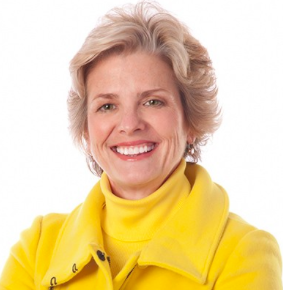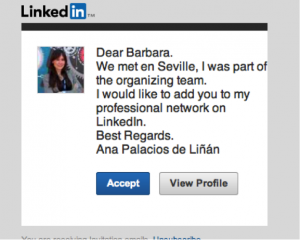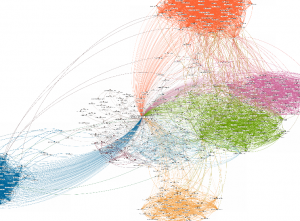Much has been written about the importance of networking, but it’s so important that we think it bears revisiting, customized for entrepreneurs in the life sciences sector. In San Francisco or Boston, startups or new offices of non-local companies struggle to stand out among a crowd of many; while in midcountry regions like Minnesota, we find that there is an opposite challenge – life science companies may feel as isolated as though they’d been plopped in the middle of the great North Woods. The solution in both cases, of course, is to find effective opportunities to make yourself seen and heard. Here are some rules of engagement that we think will take you far.
Nothing, but nothing can replace the power of face-to-face networking.
Therefore, our first recommendation is DO think local. For example, if you’re new to the San Francisco Bay area, Audrey Erbes’s website is a great place to get the lowdown on the week’s seminars and other networking opportunities, which in turn provide an entrée into a wide array of specialized groups and forums for targeted networking. Local non-profit organizations can be of great assistance in helping you make local connections.
In southern California, Connect and SABPA host events with great content and active networking. Illinois’ iBIO’s PROPEL center has a full roster of educational and profession events.
Minnesota’s LifeScience Alley is the largest state-based life sciences trade association in the U.S., and helps foster industry connections through a variety of events. The Association’s membership employs approximately 250,000 Minnesotans, and its reach extends throughout the Midwest and Canada. Any impression that you’re an isolated biotech company in Minnesota is quickly dispelled when you attend LSA’s annual conference, which is large enough to fill a convention hall at the Minneapolis Civic Center. Sirid Kellermann, President of 4th & Aspen Life Sciences Consulting, attests to the effectiveness of LSA’s events: “I’ve attended their annual conference as well as more intimate, targeted gatherings. In six months and three events, I found two high-value clients.” Frank Jaskulke, LifeScience Alley’s Director of Membership, says, “Unlike the medical device industry in Minnesota, when someone in the biotech community needs to find a resource they need to work harder to find it locally. That makes it even more important to take advantage of networking events, conferences and other gatherings.”
In the biopharma hub of Boston and Cambridge there are unlimited options for networking events and engaging in industry activities. Find a few points of reference to prioritize your activities that will reach the people important to your professional focus, and expand from there. Try starting with MassBio, MassMedic, Xconomy, and Biotech Tuesdays.  If you are focused on the start-up and entrepreneurial space, get involved with technology commercialization functions at local research institutions, incubators and start-up organizations such as MassChallenge. We have found the community in Boston to be exceptionally generous in sharing their time, knowledge and networks.
If you are focused on the start-up and entrepreneurial space, get involved with technology commercialization functions at local research institutions, incubators and start-up organizations such as MassChallenge. We have found the community in Boston to be exceptionally generous in sharing their time, knowledge and networks.

To enhance your long-term networking success, Frank Jaskulke suggests people “DO make an extra effort to share their connections and pay it forward. Having a cup of coffee or a phone conversation with someone provides interesting conversation and a new relationship that six months down the road could be the difference between success and failure.” Laurie A. Halloran, President & CEO of Halloran Consulting Group in Boston, MA, recommends that “once you establish a dialogue, DON’T schedule a meeting without confirming that the time and place is convenient for the other person. And if you ask them for an informational networking lunch, DO attempt to pick up the tab.”
Reaching out to someone you don’t know is best done through a warm introduction to establish a level of credibility from the start. Find a connection, and suggest a brief (15 minute) phone call. It’s easier to make time for a call, and an in-person discussion can follow once a relationship is established. Keep in mind that everyone’s time is valuable, including yours. In that first communication, Laurie Halloran recommends DO have a crisp well defined reason you want to network with someone – DON’T say “I’m looking for my next opportunity and I’d like to get your input and introductions”. Personally, there is nothing that irks me more than someone asking for my time to “pick my brains”, particularly in areas where we provide services to clients.

At a recent dinner for executive women in life sciences I was dismayed to hear a panelist describe networking as something she didn’t do because it was “targeting the right people to move up the ladder in your organization.” “Effective networking is about developing valuable, authentic relationships over time,” says Paula Norbom, President of Talencio, which provides talent placement services for life science companies. More insights on effective networking can be found on a recent Talencio blog. Lauren Celano, CEO of Propel Careers concurs. “A well-developed network is one of your most important assets. The quality and strength of your network significantly impacts career opportunities, your career trajectory, and overall success. It can take years, sometimes decades, to develop a robust professional network.”
What about LinkedIn?

Paula Norbom feels strongly that “if you aren’t part of the web, you won’t be found.” LinkedIn is still the go-to place to see and be seen online. When used strategically, LinkedIn can play a major role in developing and maintaining your network. When you meet people at events and send a LinkedIn invite, DO be sure to mention where you met them, and customize the note with information about your conversation so that you are memorable. Here’s a good example.
Not only can you find people on LinkedIn, but many forget that it’s also a great way to advertise yourself and your company. DO build out your LinkedIn profile so that people can see your background. Include information about your positions, companies that you have worked for, professional activities outside of work that you have been involved in, papers you have published and your educational background. Add a professional picture so that people can associate a face with your name. Taking LinkedIn to the next step, Dana Boyle, former Vice President of Community Engagement at LifeScience Alley, recommends getting in the habit of occasionally starting or commenting on discussions. “Posting fairly regularly (even once a month) helps you establish your visibility and show your areas of interest or expertise. It may feel out of your comfort zone, but consider that this is at least as much about building a community as it is about highlighting your own background and work.”
 Paula Norbom says: “Why is networking important? It is how we learn. It is an avenue to new opportunities. It is an opportunity to brand yourself. It is a chance to make new and long-lasting friendships. Networkers share industry insights and provide further mutually beneficial references. Be prepared, take notes, exchange business cards and most of all, follow up! Talencio’s last three internal hires all came from networking. We put out the need and our network responded.”
Paula Norbom says: “Why is networking important? It is how we learn. It is an avenue to new opportunities. It is an opportunity to brand yourself. It is a chance to make new and long-lasting friendships. Networkers share industry insights and provide further mutually beneficial references. Be prepared, take notes, exchange business cards and most of all, follow up! Talencio’s last three internal hires all came from networking. We put out the need and our network responded.”





